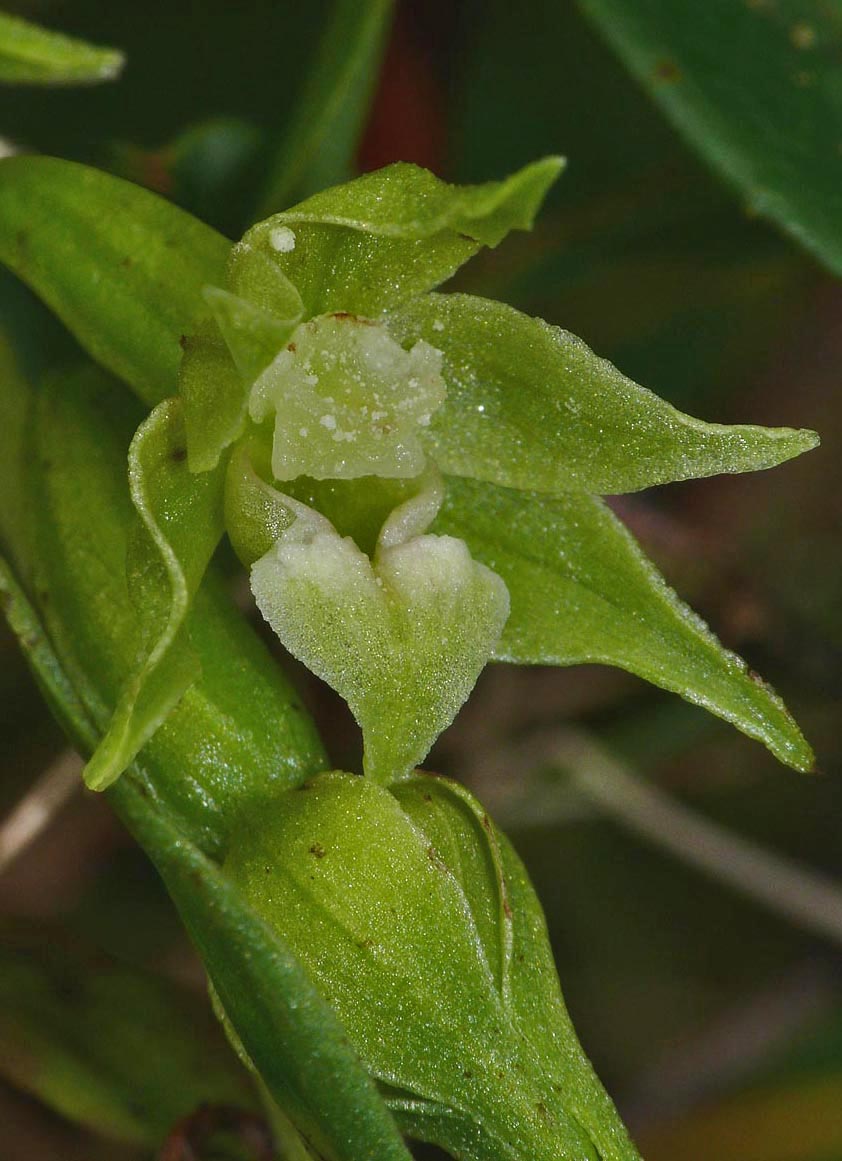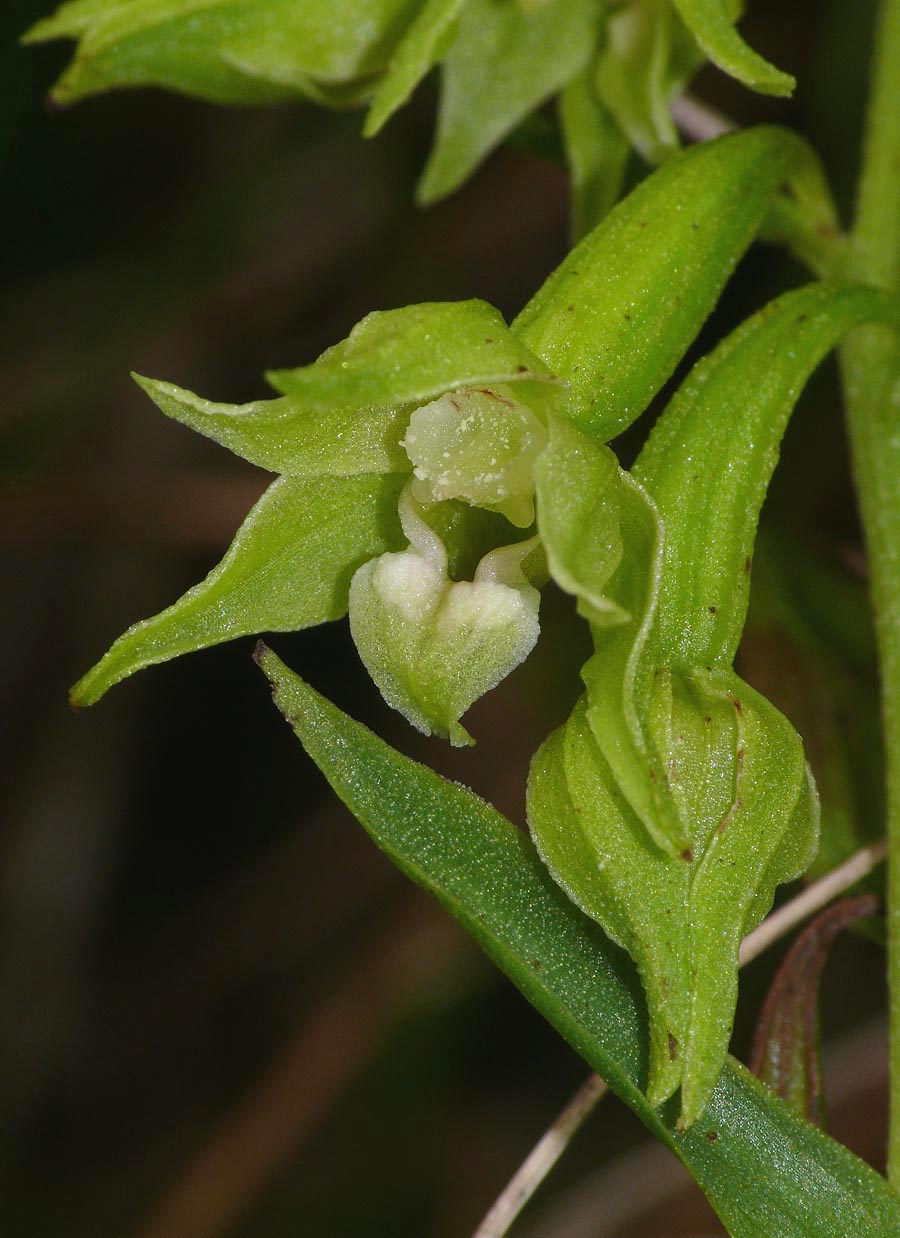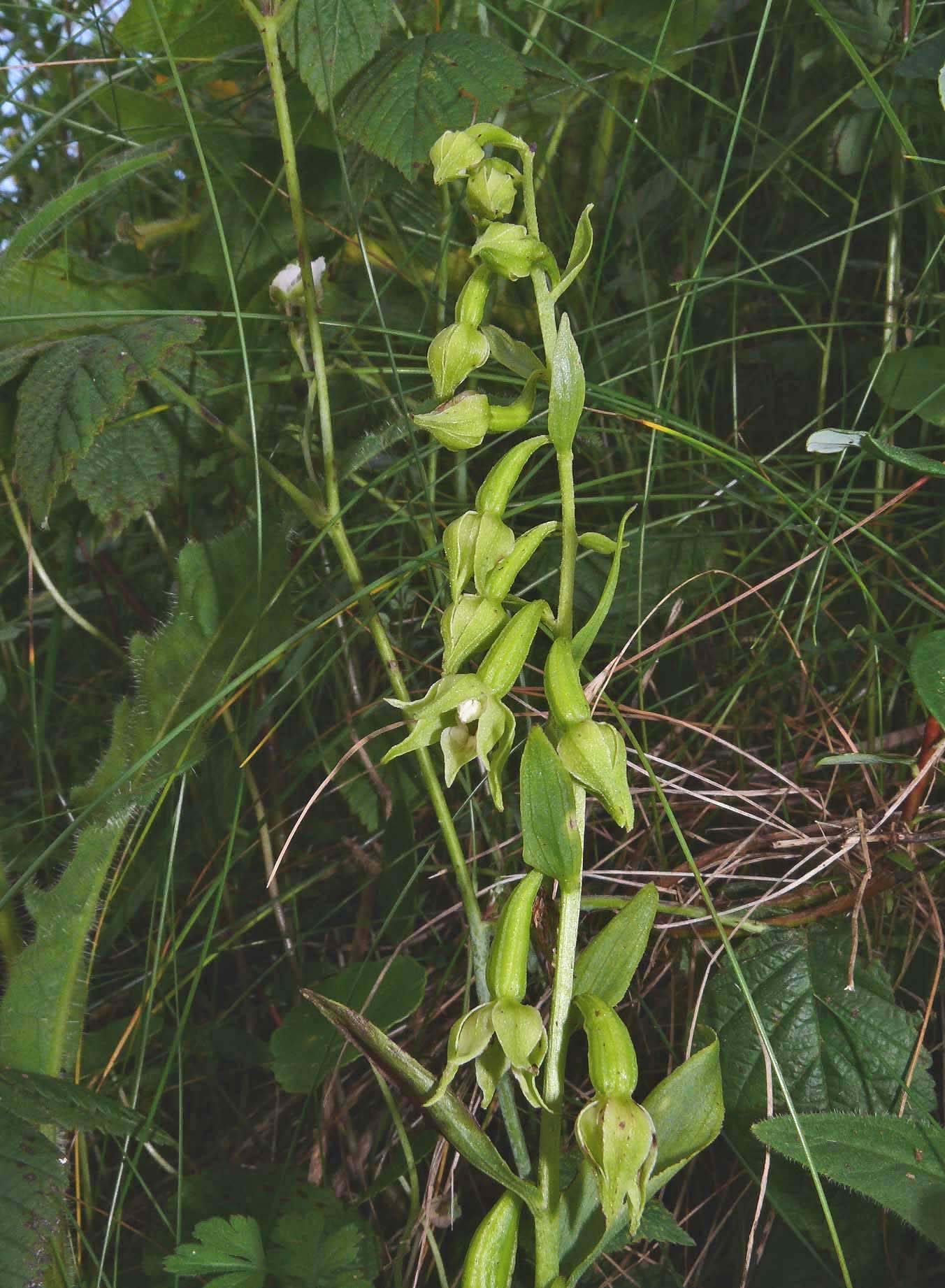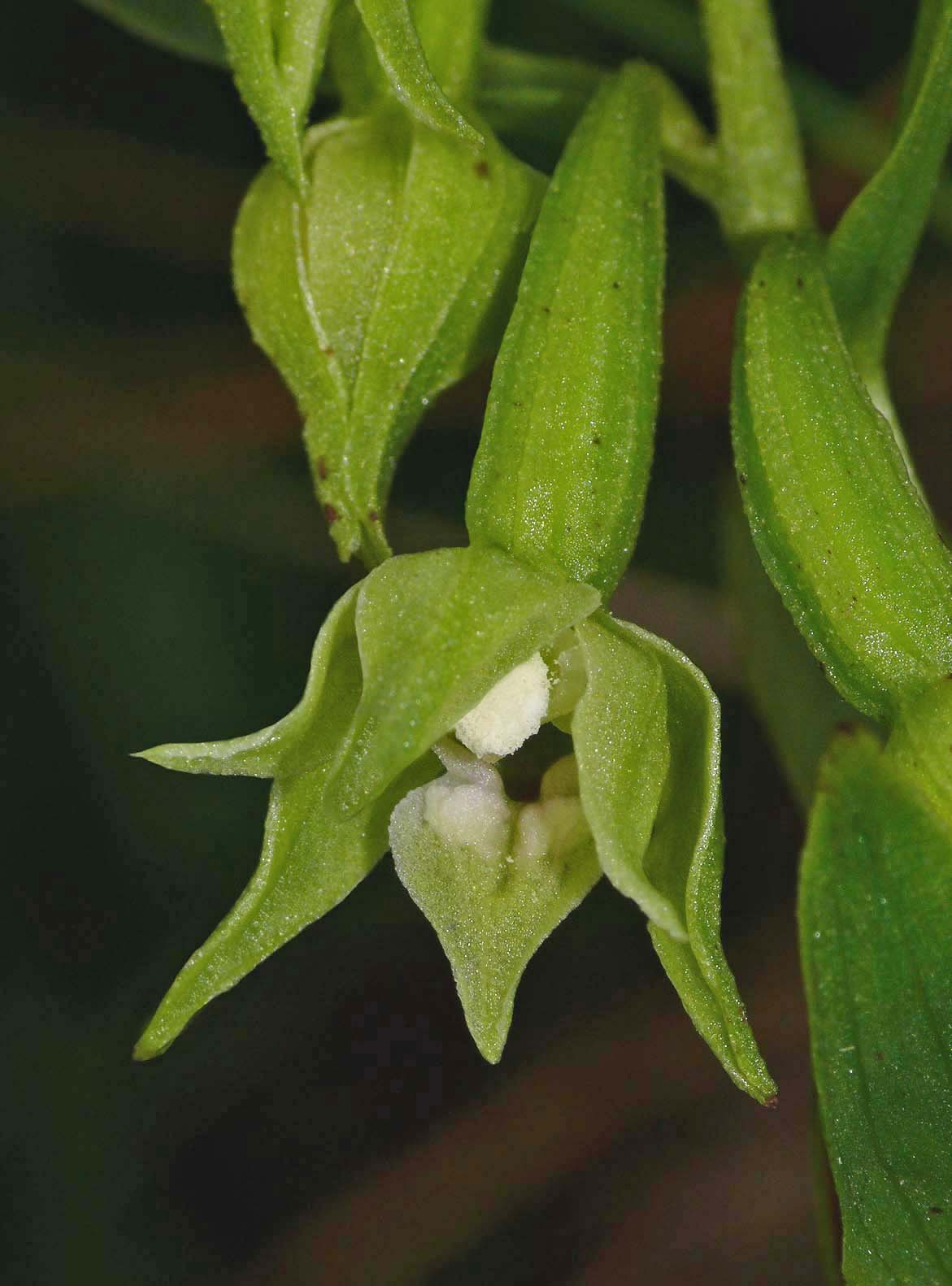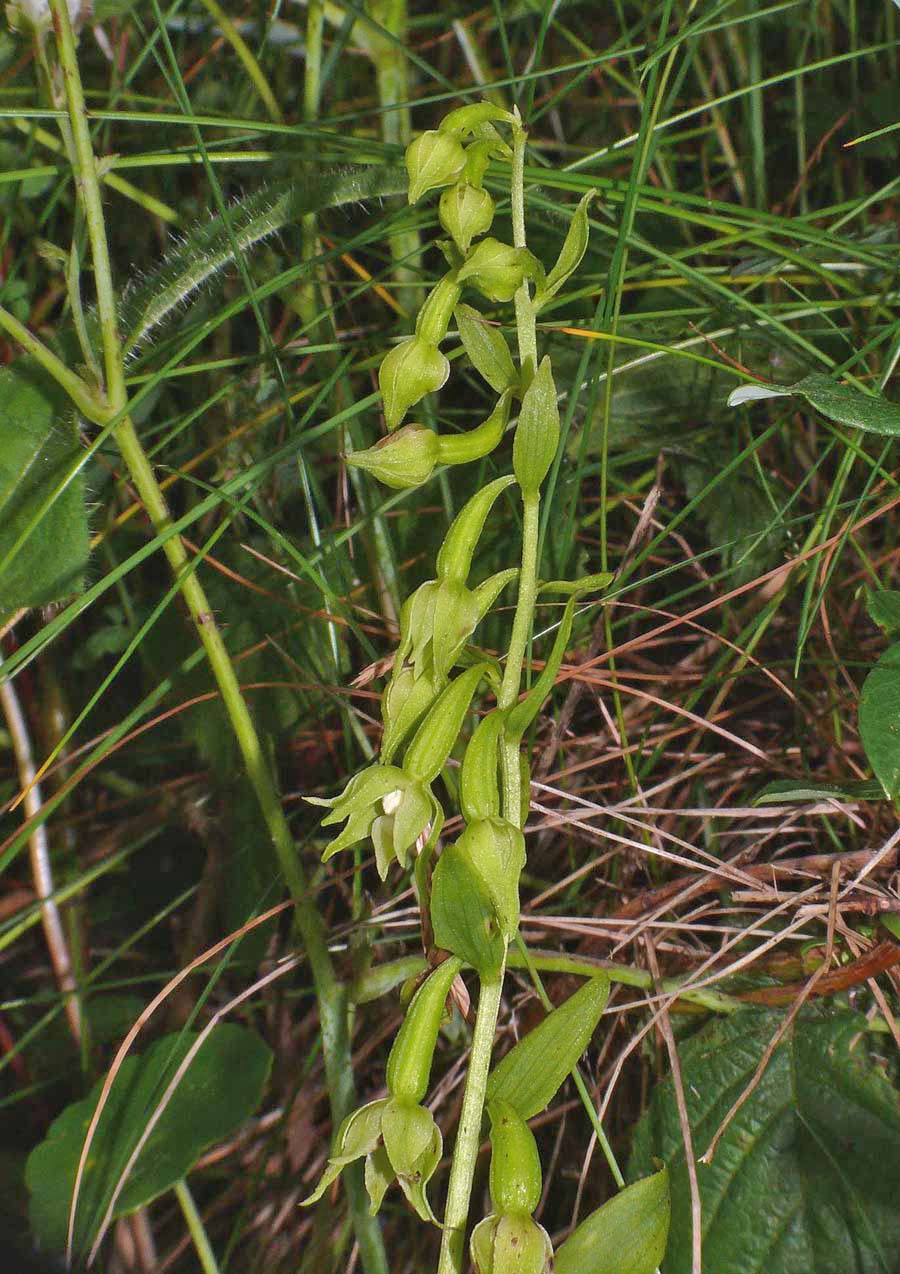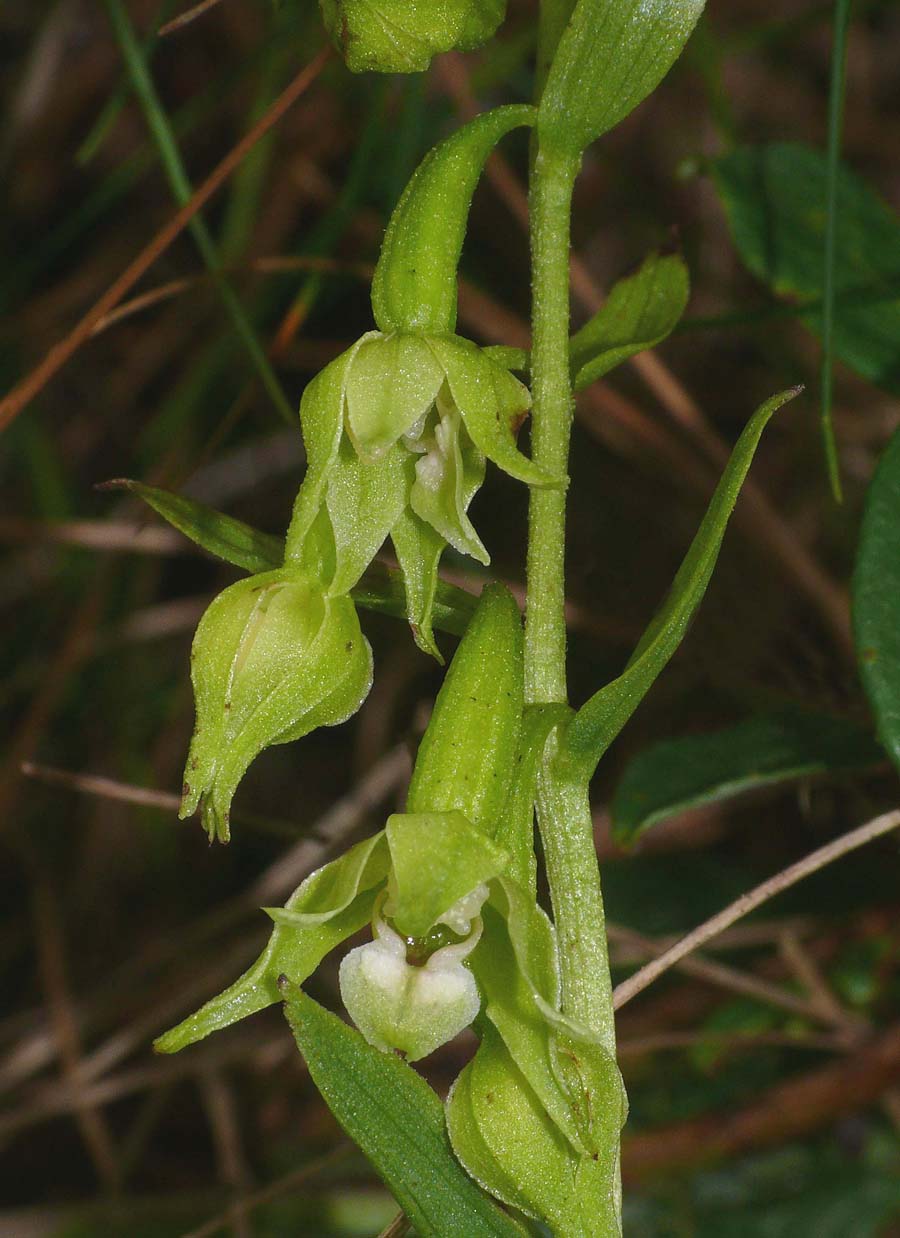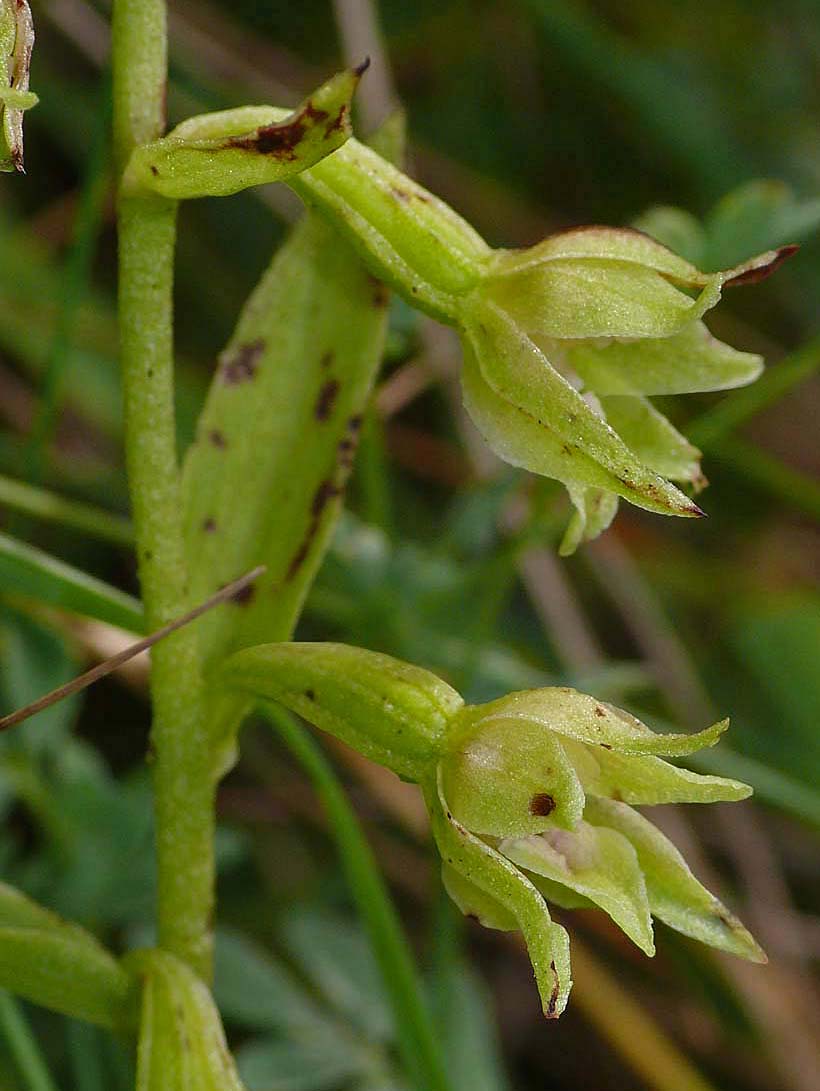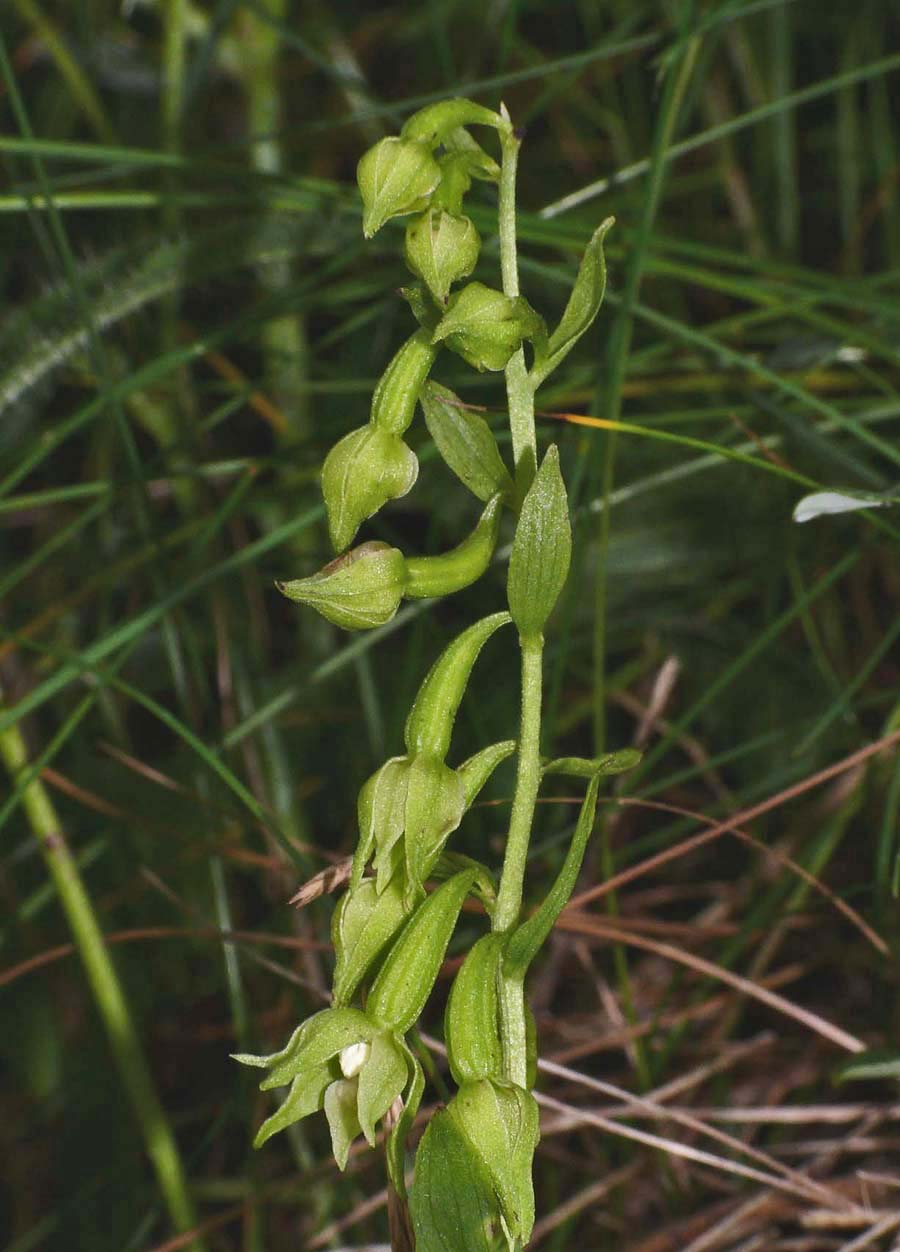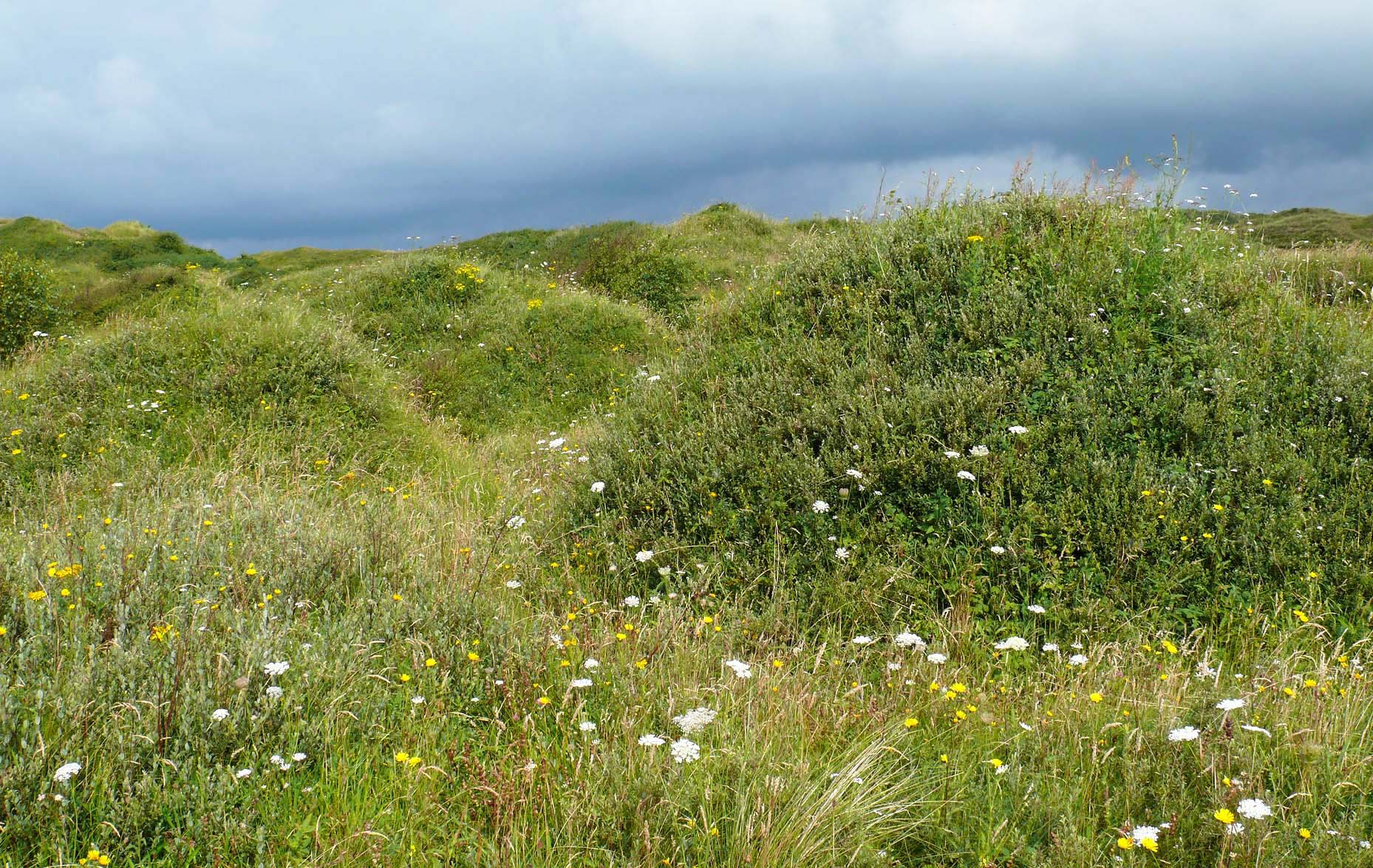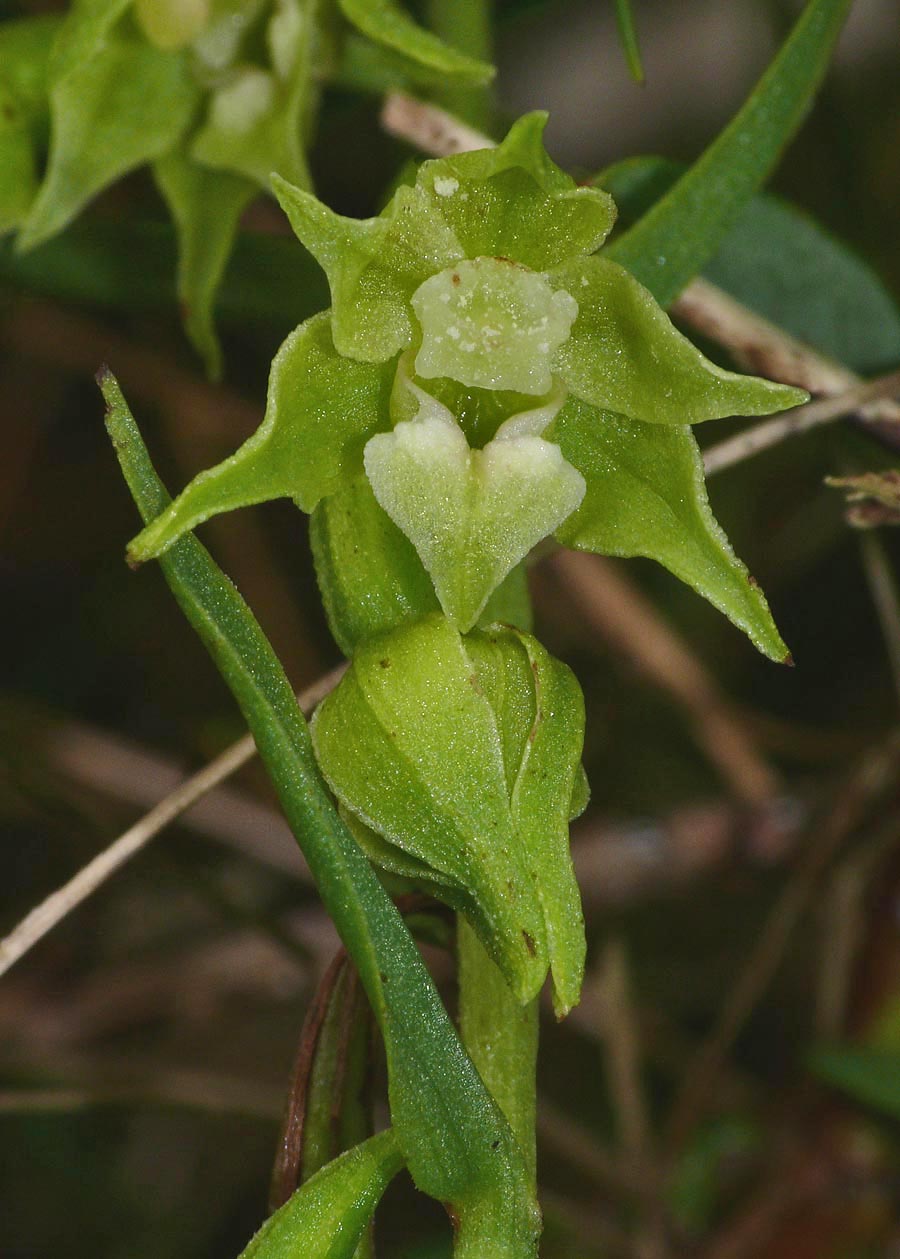E. phyllanthes
was first described by G. E. Smith from Sussex, England in 1852
but since that time several varieties have been recognized,
though the validity and status of some of them has been the subject of professional disagreement. The
situation in the UK
is relatively clear with five variations being recognized, these being E. phyllanthes v pendula, E. phyllanthes v vectensis, E. phyllanthes v degenera, E. phyllanthes v phyllanthes and the variety described here E. phyllanthes v cambrensis.
Cambrensis was first discovered by Charles Thomas in 1941 though not formally described until 1950. It was originally awarded full species status as E. cambrensis but subsequently re-classified as a variety. Despite the fact that the dune system where it occurred was heavily botanized, the plant was not seen again untill 2004 when it was finally rediscovered by Lewis and Spencer growing on the sand heaps which form its primary, perhaps only habitat (see picture 9). It has since been found on a neighbouring area of dunes. Cambrensis is usually a smallish, pale green to yellow plant that is difficult to locate given its habit of growing on the steep sides of sand heaps amongst a tangle of course vegetation that camouflage its presence. The plant can in good years be reasonably sturdy and deeper green in colour but all to often the extremely well drained environment in which it exists, coupled with a dry year, create conditions that lead to stunted and wind burnt specimens that look extremely poorly. Photo 7 depicts such a plant.
Perhaps the most characteristic feature of var. cambrensis is the length of the ovaries which are long and narrow and quite unlike either pendula or vectensis, both of which grow within the same dune system, albeit (usually) in shadier sites. The hypochile is a distinctive yellowish green and this serves to separate it from very stunted forms of E. helleborine ssp neerlandica which sometimes appear in the same habitat.
Cambrensis was first discovered by Charles Thomas in 1941 though not formally described until 1950. It was originally awarded full species status as E. cambrensis but subsequently re-classified as a variety. Despite the fact that the dune system where it occurred was heavily botanized, the plant was not seen again untill 2004 when it was finally rediscovered by Lewis and Spencer growing on the sand heaps which form its primary, perhaps only habitat (see picture 9). It has since been found on a neighbouring area of dunes. Cambrensis is usually a smallish, pale green to yellow plant that is difficult to locate given its habit of growing on the steep sides of sand heaps amongst a tangle of course vegetation that camouflage its presence. The plant can in good years be reasonably sturdy and deeper green in colour but all to often the extremely well drained environment in which it exists, coupled with a dry year, create conditions that lead to stunted and wind burnt specimens that look extremely poorly. Photo 7 depicts such a plant.
Perhaps the most characteristic feature of var. cambrensis is the length of the ovaries which are long and narrow and quite unlike either pendula or vectensis, both of which grow within the same dune system, albeit (usually) in shadier sites. The hypochile is a distinctive yellowish green and this serves to separate it from very stunted forms of E. helleborine ssp neerlandica which sometimes appear in the same habitat.
